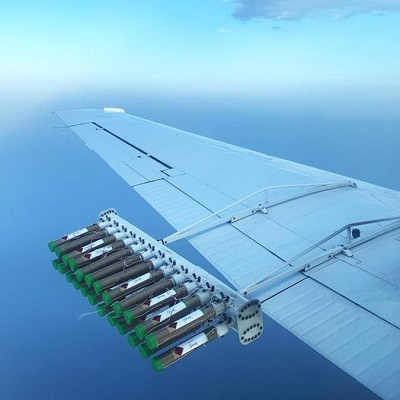
2019-10-03
Visited : 9186
The UAE has run a new method of cloud seeding to increase rainfall. In this method, a new kind of nanomaterials is being sprayed into clouds to determine whether or not they are more effective than traditional materials. The National Centre of Meteorology had previously stated that cloud seeding would result in a 30 to 35 percent increase in precipitation in a clear sky and 15 percent in a dusty air which is more probable in sandy countries.
A new method of cloud seeding is being tested in a bid to increase rainfall in the UAE. Specially-designed nanomaterials are being sprayed into clouds to determine if they are more effective than existing materials. The country's Research Programme for Rain Enhancement released details of the latest missions on Saturday.
It has deployed a custom-designed Learjet on flights from Al Ain Airport to cloud formations over the Northern Emirates and east regions. Specially-designed shell composites - tiny particles intended to boost cloud condensation - are then released into the clouds via flares.
In the past five years the UAE has set aside millions of dollars for rain enhancement research and given grants to leading researchers across the globe. The country has run cloud seeding missions for about 20 years, including more than 240 flights in 2017.
Professor Linda Zou, a professor at Khalifa University and one of the three awardees of the programme's first round of grants in 2016, said the team hopes to see results.
"Nanotechnology opens up the possibility of engineering unique cloud seeding particles to make the process of water condensation and rain precipitation more efficient," she said.
Until now simple salt crystals have been used with some success. Laboratory experiments have suggested the material has a "much higher ability to initiate condensation of water vapour and droplet growth" in the clouds than the salt crystals currently used, a news release from the centre said, and the tests will determine whether it works in reality.
The National Centre of Meteorology previously said seeding operations have led to a 30 to 35 per cent increase in rainfall in ‘clean’ skies, and up to 15 per cent in a dusty atmosphere. Because the UAE is so sandy, the latter is more common.
The process involves planes fitted with special flares that are loaded with salt crystals and fired into convective, or warm, clouds that have an updraft — or rising current of air.
The updraft then sucks up the salt crystals into the cloud, and they attract tiny particles of water that collide, becoming heavier and then falling as rain.
Although techniques have become more effective over the decades, the principle behind cloud seeding has barely changed since 1946, when a chemist with General Electric caused snow to fall after dropping dry ice into a cloud.
Silver iodide, an alternative, is now commonly used in colder conditions, while in warmer temperatures sodium chloride - salt - particles are preferred.
Alya Al Mazroui, director of the UAE Research Program for Rain Enhancement, said the project is "generating new knowledge with real-world applications".
Read the original article on The National.